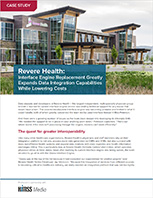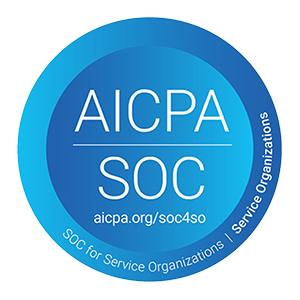Adoption of QIE results in lower costs and improved care
Interface engine replacement greatly expands Allscripts TouchWorks’ data integration capabilities while lowering costs and improving patient care

Data analysts and developers at Revere Health ― the largest independent, multi-specialty physician group in Utah ― learned its current interface engine vendor was ending technical support for any issues that would have arisen. The soon-to-be-obsolete interface engine was becoming unstable and limited in what it could handle, both of which greatly concerned the team led by Lead Interface Analyst III Risa Peterson.
And there were a growing number of issues as the team dove deeper into leveraging its Allscripts EHR. “We needed the support to be in place in case anything went down,” Peterson explained. “That’s our whole world; if the data isn’t processing through the engine, doctors can’t work efficiently.”
The quest for greater interoperability
Like many other healthcare organizations, Revere Health’s physicians and staff members rely on their integration platform to not only process more data generated by EMRs and EHRs, but also connect with more nonaffiliated health systems and expand data relations with state registries and health information exchanges (HIEs). This is particularly true at Revere Health (formerly Central Utah Clinic), which operates physician clinics in three states. Soon after learning its current interface engine was being sunset, the team decided to go all-in with the Qvera Interface Engine.
“Qvera was at the top of the list because it had exceeded our expectations for another project,” said Revere Health Senior Developer Jay Verdoorn. “Because the integration of services from different sources is becoming critical to healthcare delivery, we really needed an integration platform that was not too tightly connected to one vendor or another. Qvera offered that freedom, so now we can connect both our internal EMR and EHR systems as well as exchanging data with external registries, HIEs and other health systems with relative ease.”
One such benefit of the Qvera Interface Engine (QIE) is visualization. The previous system was text-based and didn’t offer a graphical view of how a specific interface worked or connected. Such a dashboard grew increasingly important as annual integration project requests ramped from 30 six years ago to more than 100 today. The small team handles a workload of approximately 15 active interface projects at any given time.
“We needed the support to be in place in case anything went down. That’s our whole world; if the data isn’t processing through the engine, doctors can’t work efficiently.”
Risa Peterson – Lead Interface Analyst – Revere Health
“Once we got QIE going, it was actually pretty intuitive, and now it’s easy to go in and build new interfaces,” said Jonathan Keller, Director of Data Analytics and Development at Revere Health. “Before, we were utilizing an outside consultant to support our interfaces and help with our integration projects. At one point, we were spending a lot of money on the consultants. Since implementing QIE, we’ve cut back on those costs quite a bit and do almost all of the work in-house now.”

Such cost-savings are becoming more important as value-based healthcare becomes the norm, a system in which payers such as Medicare and Medicaid reimburse providers based on outcomes instead of relying on a fee-for-service basis. Helping Revere’s 300 providers quickly retrieve clinical data from external sources ― rather than repeat diagnostic tests conducted at different locations ― saves clinicians and patients both time and money, and drives down the overall cost of healthcare.
“We’re going through a sea change in how healthcare is provided,” Verdoorn explained. “Until recently, healthcare was an isolated experience, so each office, each hospital, each doctor didn’t have much information on what everyone else was doing. As such, everyone developed their own ways of doing things. Those siloes are now breaking down.”
He equated today’s medical landscape to early railways, in which each locomotive company built railroad tracks to its particular specifications. That worked until these tracks needed to connect, and from that emerged railway standards everyone used. “We’re at that point now where we’re trying to integrate information from disparate systems and running into issues,” Verdoorn said.
“We want to be able to provide the best information to care for the patient,” he continued. “And to do that, we need to know what doctors at one place have done at another. That’s a fun challenge.”
“Revere Health was able to contribute data for quite a while to our health information exchange. Now we feel we’re able to give back and push information directly to their systems, which is valuable to their physicians and other members of their communities.”
Matthew Hoffman, MD – CMIO – Utah Health Information Network (UHIN)
Standards and state registries
Revere’s issues are typical of healthcare organizations across the country, said Ron Shapiro, Vice President and Chief Technology Officer for Qvera. “These issues deal with the fact that although we have healthcare standards, like HL7, they are interpreted differently by vendors. Therein lies the crux of the interoperability challenge. Interface engines, in general, help map those messages to the vendors’ standards.”
Interface engines also take complex challenges and simplify them for the end user. Shapiro recalled another large multispecialty clinic in which patient referrals were intentionally booked out by days because it took that long for staff to request and receive critical patient health records from outside sources. “Using QIE, we created a process to get access to that information within minutes, so now they can do same-day appointments. Among other positive outcomes for the patient, the clinic can serve more patients in the community.”
In addition to no longer depending on outside consultants, and having both more control and flexibility with its integration projects, the team at Revere Health is learning to innovate and improve workflows so clinicians can access data as they need it.
QIE can accommodate all connectivity standards and data formats used by health information exchange (HIE) platforms, by data repositories, and by immunization registries as well as EHR, and hospital and laboratory systems. This has allowed Revere Health to work more closely with systems such as the Utah Health Information Network (UHIN), which operates a regional HIE comprising some 500 data sources representing 5 million unique lives and 53 million records.
Prior to implementing QIE, “Revere Health was able to contribute data for quite a while to our health information exchange,” said Matthew Hoffman, MD, CMIO for UHIN. “Now we feel like we’re able to give back and push information directly to their systems, which is valuable to their physicians and other members of their communities.” For instance, Hoffman said, a recent data quality review showed UHIN had 30 percent more HIE data on blood pressure than Revere Health.
“We’ve worked with states’ departments of health to feed their registries,” said Keller, the Revere Health Director of Data Analytics and Development. “Recently, though, we’ve been able to better exchange health information and get discrete data from documents and labs from these organizations directly into our EMR and build a better picture of patient care.”
“The more systems we can integrate, and the more data we can bring in and feed out to other systems, the better.”
Jonathan Keller – Director of Data Analytics & Development – Revere Health
Enabling innovation and improving workflows
Among the items on the Revere Health interface team’s to-do list is becoming fluent with HL7’s FHIR® standard so that it can participate in pilot programs for certain state registries, such as cancer and immunizations.
In some ways, the team has become a victim of its own success, with clinicians raising expectations thanks to tighter integrations with PinPoint and Phreesia software as well as to project management tools and EHRs. Revere Health is also now able to swap patient records more easily with neighboring Intermountain Healthcare. “The more systems we can integrate, and the more data we can bring in and feed out to other systems, the better,” Keller said.
In the end, the pending loss of support for a key piece of software proved to be the catalyst for significant improvements for Revere Health’s interface team. It is no longer dependent on outside consultants, and has improved workflows, and, importantly, the team greatly expanded the amount of patient data exchanged with other medical facilities, state registries and health information exchanges.
Produced by HIMSS Media | www.himssmedia.com | © 2018


